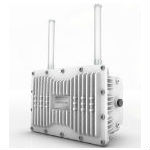 Small cells could help network operators generate a business case for deploying wireless service in rural areas that currently lack mobile service, according to new research from wireless industry group Small Cell Forum. The forum estimates that network operators in developed nations could break even on a small cell deployment with as few as one or two subscribers per kilometer.
Small cells could help network operators generate a business case for deploying wireless service in rural areas that currently lack mobile service, according to new research from wireless industry group Small Cell Forum. The forum estimates that network operators in developed nations could break even on a small cell deployment with as few as one or two subscribers per kilometer.
To date most of the attention on small cells has focused on enhancing capacity in high-traffic urban areas. But some network operators also have begun to deploy small cell technology in rural areas as a more cost effective alternative to traditional macrocells.
Network operators in 16 U.S. states could see a boost of at least 10% in the number of unserved people they could reach by deploying small cells rather than macrocells, according to the Small Cell Forum. And in all U.S. states except Nevada network operators could see at least a five percent boost in the number of unserved people they could reach by using small cells.
Perhaps surprisingly, the 16 states that have the most to gain from small cell deployments are scattered around the country. They include Washington, California, Utah, Kansas, Texas, Louisiana, Georgia, Florida, Iowa, Wisconsin, Illinois, Ohio, Massachusetts, Connecticut, Maine and Delaware.
Benefits of Rural Small Cells
“As mobile connectivity becomes ever more valuable in our everyday lives and workplaces, so the need to extend coverage beyond densely populated areas grows,” wrote the Small Cell Forum in its “Release Five: Rural & Remote” report. “Small cells are set to play a leading role in connecting the unconnected.”
The Small Cell Forum’s “Release Five” includes a total of eight reports about various aspects of rural small cell deployments. While some parts of the reports focus on the developing world, the forum also included data and case studies from developed countries. For example, the authors highlight Vodafone’s deployment in a small rural village in the U.K. that previously lacked mobile service. Vodafone installed small cells in the local pub, the post office, the village hall, the social club and inside an old public phonebooth. The local businesses with the small cells saw their business increase and more than 2,000 calls were made monthly that would not have been made before.
Worldwide, the Small Cell Forum estimates that small cell deployments in rural areas worldwide could open up a market of 650 million users worth $163 billion.


